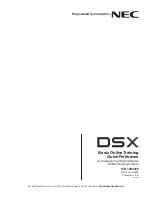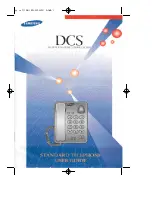
10
Radio Interference
This device complies with Part 15 of the FCC Rules and RSS-213
of Industry Canada. Operation is subject to the following two
conditions: (1) this device may not cause harmful interference, and
(2) this device must accept any interference received, including
interference that may cause undesired operation.
This equipment has been tested and found to comply with the limits
for a Class B digital device, pursuant to Part 15 of the FCC Rules
and RSS-213 of Industry Canada. These limits are designed to
provide reasonable protection against harmful interference in a
residential installation. This equipment generates, uses and can
radiate radio frequency energy and, if not installed and used in
accordance with the instructions, may cause harmful interference to
radio communications. However, there is no guarantee that
interference will not occur in a particular installation. If this
equipment does cause harmful interference to radio or television
reception, which can be determined by turning the equipment off
and on, the user is encouraged to try to correct the interference by
one or more of the following measures:
•
Reorient or relocate the receiving antenna.
•
Increase the separation between the equipment and receiver.
•
Connect the equipment into an outlet on a circuit different from
that to which the receiver is connected.
•
Consult the dealer or an experienced radio/TV technician for
help.
RF Radiation Exposure
This equipment complies with FCC and Industry Canada radiation
exposure limits set forth for an uncontrolled environment. This
equipment should be installed and operated with a minimum
distance of 8 inches (20 centimeters) between the radiator and your
body.
This transmitter must not be co-located or operated in conjunction
with any other antenna or transmitter.
Basic Requirements
In order to use all the features of the Mitel 1000 system, you must
have the following:
DSL service up and running on your telephone line (or an
equivalent broadband Internet access).
Instructions from your ISP on what type of Internet access you will
be using, and the addresses needed to set up access.
Instructions from your ISP on the settings required to configure your
Voice over IP (VoIP) service.
One or more computers each containing an ethernet card (10Base-
T/100Base-T network interface card (NIC)).
For system configuration using the supplied web-based program: a
web browser such as Internet Explorer v4 or later, or Netscape v4
or later. Note that version 4 of each browser is the minimum version
requirement – for optimum display quality, use Internet Explorer v5,
or Netscape v6.1.











































